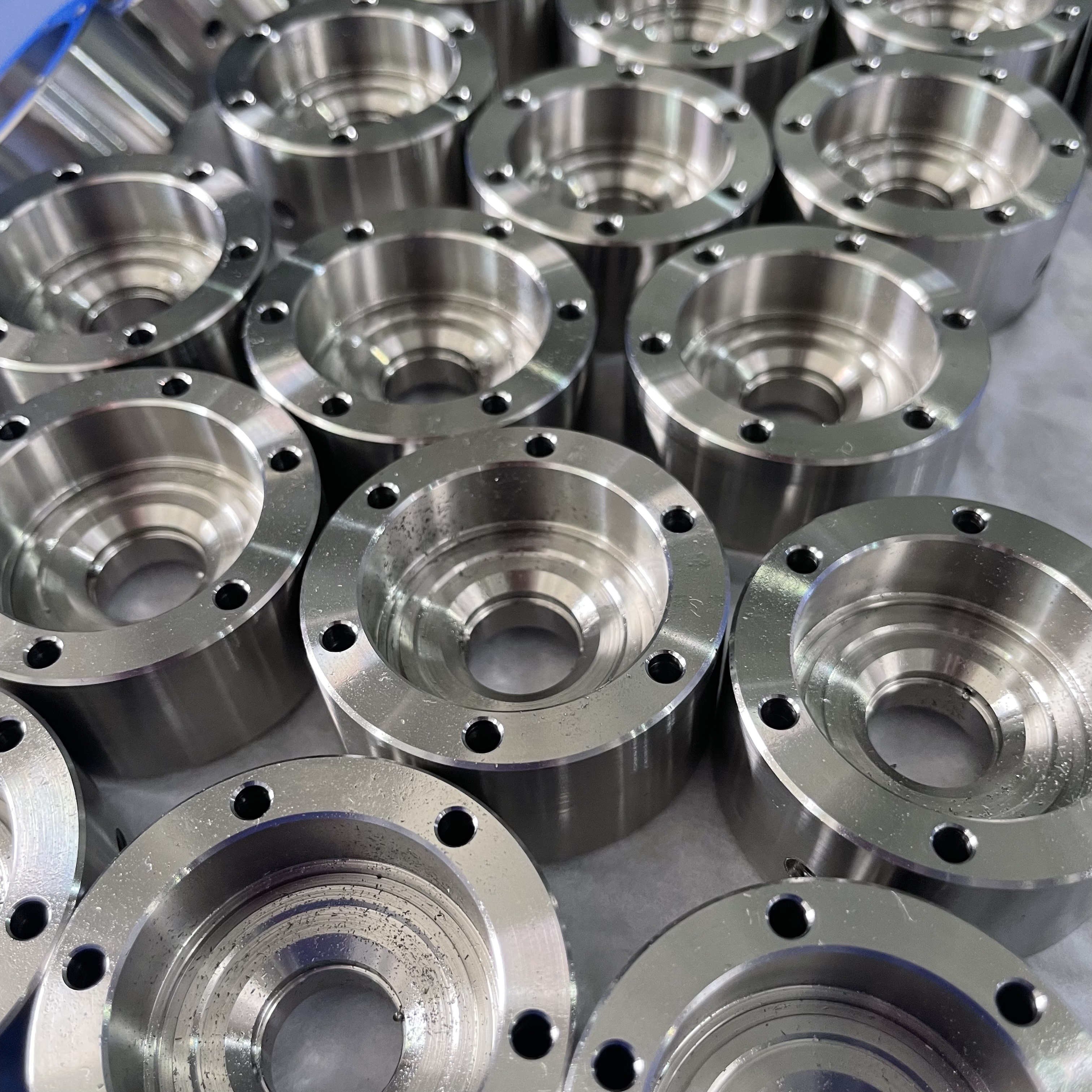Troubleshooting Common Problems in Thread Milling for CNC Machining Centers

Welcome to the World of CNC Machining
As we delve into the world of CNC machining centers, it's essential to understand the pivotal role that thread milling plays in this realm.
The Importance of Thread Milling in CNC Machining Centers
Why Thread Milling?
Thread milling is a crucial process in CNC machining as it allows for the creation of precise and intricate threads within various materials. This method offers versatility, enabling the production of threads with different profiles and sizes, catering to diverse industrial needs.
The Role of CNC Machining Centers
CNC machining centers serve as the powerhouse for executing thread milling operations with unparalleled accuracy and efficiency. These centers are equipped with advanced technology and tools that enable the seamless execution of complex thread milling tasks, contributing to enhanced productivity and quality in manufacturing processes.
Setting the Stage for Troubleshooting
Recognizing the Value of Problem Solving
In the realm of CNC machining, problem-solving skills are invaluable. Identifying and resolving issues encountered during thread milling not only ensures smooth operations but also fosters continuous improvement in machining processes.
My Journey with CNC Machining
Throughout my experience in CNC machining, I've encountered various challenges related to thread milling. These experiences have been instrumental in honing my problem-solving abilities and deepening my understanding of effective troubleshooting techniques.
Understanding Common Problems in Thread Milling
As we navigate the intricate world of CNC machining, it's crucial to grasp the common challenges that arise during thread milling processes. These issues can significantly impact the efficiency and precision of manufacturing operations.
The Challenge of Built-Up Edge
Identifying the Issue
One of the prevalent issues encountered in thread milling is the formation of a built-up edge on the cutting tool. This phenomenon occurs when workpiece material adheres to the tool's cutting edge, leading to poor surface finish and potential tool breakage.
Causes and Consequences
The occurrence of built-up edge can be attributed to factors such as inadequate tool rigidity, excessive cutting speeds, or improper chip evacuation. When left unaddressed, this issue can result in diminished thread quality, increased tool wear, and compromised dimensional accuracy.
The Dilemma of Radial Rake Angle
Understanding Radial Rake Angle
Another critical aspect affecting thread milling is the radial rake angle of the cutting tool. This angle refers to the inclination of the rake face relative to the workpiece surface and significantly influences chip formation and cutting forces during machining.
How It Affects Thread Milling
An inappropriate radial rake angle can lead to challenges such as poor chip control, increased cutting forces, and heightened tool wear. Moreover, it directly impacts surface finish and thread accuracy, underscoring its pivotal role in successful thread milling operations.
Practical Solutions for Thread Milling Challenges
Now that we've identified the common problems encountered in thread milling, it's crucial to explore practical solutions to address these issues effectively.
Addressing Built-Up Edge
Adjusting Tool Rigidity and Reducing Vibration
One effective strategy for mitigating built-up edge is to focus on enhancing tool rigidity and minimizing vibration during the cutting process. This can be achieved by utilizing cutting tools with robust construction and employing suitable machining parameters to ensure stable cutting conditions. Additionally, implementing advanced tool coatings designed to reduce friction and adhesion can contribute to preventing the accumulation of workpiece material on the cutting edge, thereby combating built-up edge.
My Experience with Overcoming Built-Up Edge
In my journey with CNC machining, I encountered a persistent challenge related to built-up edge during thread milling operations. By optimizing the tool rigidity and implementing vibration-dampening techniques, I successfully overcame this issue, resulting in improved surface finish and prolonged tool life. This experience underscored the significance of proactive measures in addressing built-up edge, ultimately enhancing the overall efficiency of thread milling processes.
Optimizing Radial Rake Angle
Finding the Right Angle
Optimizing the radial rake angle is paramount in achieving superior chip control and minimizing cutting forces during thread milling. By carefully selecting the appropriate radial rake angle based on the specific material and machining conditions, manufacturers can optimize chip formation and evacuation while reducing tool wear. This meticulous approach contributes to enhancing thread quality and dimensional accuracy, elevating the overall performance of thread milling operations.
A Success Story in Rake Angle Adjustment
I vividly recall a notable success story involving the adjustment of the radial rake angle during a complex thread milling project. Through rigorous experimentation and analysis, we identified an optimal rake angle configuration tailored to our machining requirements. The subsequent implementation of this customized approach resulted in remarkable improvements in chip control, surface finish, and overall productivity, highlighting the transformative impact of fine-tuning the radial rake angle.
Final Thoughts and Best Practices
As we conclude our exploration of troubleshooting common problems in thread milling for CNC machining centers, it's imperative to reflect on key takeaways and share best practices that can elevate the efficiency and precision of thread milling operations.
Summarizing Key Takeaways
Learning from Mistakes
Embracing the inevitability of encountering challenges in thread milling is crucial. Each obstacle presents an opportunity for learning and growth, fostering a deeper understanding of the intricacies involved in machining processes. By analyzing and addressing mistakes, manufacturers can refine their approaches, ultimately enhancing the quality of threaded components and optimizing production outcomes.
The Continuous Journey of Improvement
Thread milling is an evolving discipline, characterized by continuous advancements in technology and techniques. Embracing a mindset of perpetual improvement is essential for staying abreast of industry developments and refining machining strategies. This commitment to ongoing enhancement not only elevates the proficiency of thread milling but also fosters innovation within manufacturing environments.
Sharing My Best Practices
Tips for Successful Thread Milling
Prioritize comprehensive tool maintenance to ensure optimal performance and longevity.
Regularly monitor machining parameters such as cutting speeds and feeds to uphold consistent quality.
Emphasize collaboration between machinists, engineers, and tooling experts to leverage diverse perspectives in troubleshooting challenges.
Encouraging Continuous Learning and Experimentation
Fostering a culture of continuous learning and experimentation within CNC machining facilities is paramount. Encouraging team members to explore new techniques, tools, and methodologies cultivates a dynamic environment conducive to innovation and problem-solving. Embracing curiosity and adaptability fuels progress in thread milling practices, driving sustained excellence in manufacturing endeavors.
See Also
Solving Typical Issues in Thread Milling on CNC Machines
Becoming Proficient in CNC Milling for Accurate Part Manufacturing
Grasping the Key Procedures of Precision CNC Machining
Becoming an Expert in CNC Milling: Procedures, Equipment, and Uses
About US
Follow Us
Your prototype holds unparalleled significance, and we deeply value its uniqueness. Collaborating with you during the preparation phase for running your prototype or parts is a commitment we gladly embrace. Whether it's a single part or a complex assembly, we are dedicated to selecting the optimal tools and pathways to bring your envisioned product to life.
At Precision Fab CNC Machining, we specialize in producing parts for prototypes, short runs, and high-volume production. Our prototyping machine capabilities extend across metal, plastic, and wood machining, with welding fabrication services available to complement and finalize your prototype if required.
Address
Address: Room320 10F, Building A,Nanshan international building, Dayawan District, Huizhou, Guangdong, 516001 China
Contacts
billy@timaycnc.com

